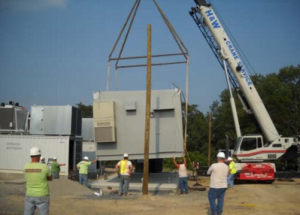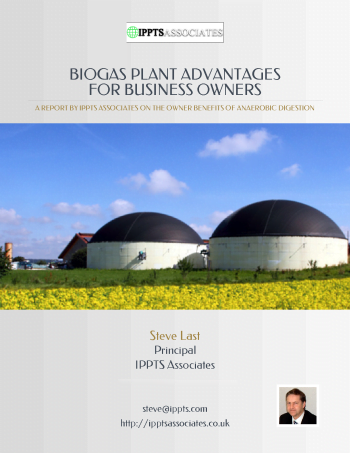
The Advantages of Biogas Plants: A Sustainable Energy Solution
Discover the advantages of biogas and how it can be used as a sustainable energy source. Learn about the benefits of biogas production and its positive impact on the environment.
Welcome to our page on the benefits of using biogas for energy. In this article, we will explore the advantages of biogas and its role as a sustainable energy source. We will also highlight the positive impact of biogas production on the environment.
What is Biogas?
Biogas is a renewable energy source that is produced through the process of anaerobic digestion. It is composed primarily of methane and carbon dioxide, along with small amounts of other gases. Biogas is generated by breaking down organic waste in the absence of oxygen.
Advantages of Biogas
Biogas offers numerous advantages as a sustainable energy source:
- Renewable and sustainable: Biogas is produced from organic waste, which is constantly generated, making it a renewable energy source.
- Reduction of greenhouse gas emissions: Biogas production helps to reduce methane emissions from organic waste, which is a potent greenhouse gas.
- Diversification of energy supply: Biogas provides an alternative to fossil fuels, reducing dependence on non-renewable resources.
- Potential for decentralized energy production: Biogas plants can be established at various scales, allowing for localized energy production and reducing transmission losses.
- Utilization of organic waste and agricultural byproducts: Biogas production helps to manage and utilize organic waste, reducing landfill usage and providing a valuable resource.
- Economic benefits and job creation: Biogas projects create employment opportunities and contribute to local economies.
- Contribution to a circular economy: Biogas production promotes the concept of a circular economy by recycling organic waste and closing the loop.
Biogas Applications
Biogas can be utilized in various applications:
- Electricity generation: Biogas can be used to produce electricity through the combustion process in a generator.
- Heat production: Biogas can be used as a source of heat for residential and industrial purposes.
- Vehicle fuel and transportation: Biogas can be processed and used as a fuel for vehicles, reducing reliance on fossil fuels.
- Combined Heat and Power (CHP) systems: Biogas can be used in CHP systems to simultaneously generate electricity and heat.
- Injection into the natural gas grid: Biogas can be upgraded and injected into the existing natural gas grid for wider distribution and use.
- Biogas upgrading for biomethane production: Biogas can be further purified to produce biomethane, which has similar properties to natural gas and can be used in various applications.
Biogas Plant Design and Operation
The idea of installing an anaerobic digestion plant to benefit from the advantages of biogas has been around for probably at least 90 years in the UK as an energy provider. But It was not until energy prices rocketed in the 1990s that it was ever imagined that it might be commercially viable, and the first UK plants were seen then as more of a potential means of:
- dealing with animal herd waste in an environmentally friendly manner
- while incidentally creating renewable energy and valuable fertiliser.
Even though the basic AD process has been used for many years in sewage sludge management and was increasingly used in Europe as a major contributor to green energy production from specially grown bio-crops, the technology back then was unreliable, and the economics meant that it was not viable to develop it on a commercial scale.
In Germany, where many farms have in the past received generous subsidies from the German government to grow maize as a biomass feedstock for AD, there are now more than 3,500 plants. Since 2010, UK AD plants are in principle capable of generating power that is equivalent to about a quarter of the UK’s current domestic energy production.

The Anaerobic Digestion Process
We will describe the process by reference to a common on-farm biogas plant method that is commonly used.
Dairy herd, pig slurry, and food waste are mixed to a porridge-like consistency and heated to 70°C for one hour to ensure that any pathogens are destroyed. The mix is then fermented for approximately 30 days in a gas-tight vessel.
Within these fermenters, the naturally occurring microorganisms break down the organic matter to produce methane-rich biogas.
The biogas is converted to electricity and heat through a combined heat and power engine. The spare electricity, after plant and farm demands are met, is fed into the national grid. The average plant of this sort can produce sufficient power for 500 to 1,500 homes.
The heat is re-used in the process for pasteurization and for keeping the fermentation vessels at a constant temperature, which allows the fermentation bacteria to grow and produce gas efficiently. The remaining product is a nutrient-rich bio-fertilizer that is stored on-site until weather conditions and seasons permit spreading on the farm’s land in place of fossil fuel-derived fertilisers.
The Benefits Of Anaerobic Digestion

There is such a huge potential for AD plants to treat food waste because the vast majority of the UK’s food waste currently ends up in landfills, where it degrades in an uncontrolled manner, releasing methane which is more than 22 times more damaging as a greenhouse gas than carbon dioxide.
Leachate is also produced in landfills, which is potentially a very polluting liquid that is also costly to treat. But perhaps the most forgotten benefit of not putting food waste into landfills is that it provides an attractive habitat for vermin and scavenging birds in landfills.
This makes it a major contributor to the bad-neighbour reputation of landfills, and its removal will have untold benefits for those living near landfills.
AD is suitable for treating and disposing of a wide range of organic materials and is also able to confidently treat waste to standards required by the Animal By-Products Regulations. On-farm food waste plants can be designed as integrated units to accept a mix of feedstocks that include slurry and both packaged and non-packaged food waste.
AD takes place in the absence of air inside fully enclosed vessels. By definition, the operator is not exposing any part of the process directly to the atmosphere, thus eliminating or significantly reducing the odour that can only be generated during digester feeding and discharging operations. These odor-sensitive points can be handled in a way that will not allow the emission of odors by making the delivery and discharge bays enclosed and by using ventilation fans, which deliver the air they collect into odor-treating filters before emitting the ventilation airflow to atmosphere.
A well-designed AD process cannot emit any potentially polluting run-off either, as all waste water is contained and treated within the process to form part of the nutrient rich bio-fertiliser output.
Summarizing the Main Advantages
The principal advantage of AD over other biological treatment processes, such as composting, is that AD produces renewable energy. Other technologies (like composting) can be energy-intensive users of fossil fuels, whereas AD uses self-generated energy for the process and has a valuable output of both electricity and CHP heat.
Anaerobic digestion produces energy in the form of biogas, which is a useful fuel for engine-driven generators. Another benefit is that, in comparison to other technologies, an AD facility requires a smaller footprint than, for example, an in-vessel composting facility for the same throughput capacity.
Food and animal wastes are processed in an environmentally sustainable way that preserves an age-old cycle of reusing plant nutrients while using the energy that falls on the farmland from the sun via photosynthesis to produce renewable electricity and a nutrient-rich bio-fertiliser. The fertiliser is used in a circle of recycling.
When the fertilizer is taken up in the crop and returned to the AD plant as plant matter, the circle is then complete. If you think about it, what starts in food production ends up in food production once again, and it is a never-ending self-powered closed loop.
If you are considering undertaking all the stages of design, planning, environmental licensing, and construction of an AD plant and find it daunting, then we would be pleased to hear from you, (use our Contact Form) to provide us with your basic requirements and ask us to provide information on our AD plant consultancy service.
 We have compiled a more detailed ebook on the same subject as this web page for our readers. It is freely available for downloading by clicking the download button below:
We have compiled a more detailed ebook on the same subject as this web page for our readers. It is freely available for downloading by clicking the download button below:
[wpdm_file id=1]
Tags: AD plant advantages, Anaerobic Dig
What are the Main Components of full-scale Biogas Plant
A biogas plant consists of several components:
- Biogas digester: The main component where anaerobic digestion takes place.
- Feedstock selection and preparation: The choice of organic waste and its preparation for the digestion process.
- Anaerobic digestion process: The breakdown of organic waste by microorganisms in the absence of oxygen.
- Biogas purification and utilization: The removal of impurities from biogas and its utilization in various applications.
- Monitoring and maintenance: Regular monitoring and maintenance of the biogas plant to ensure optimal performance.
Environmental Benefits of Biogas
Biogas production offers several environmental benefits:
- Reduction of methane emissions: Biogas production helps to reduce methane emissions from organic waste, which is a potent greenhouse gas.
- Mitigation of odor and air pollution: Biogas plants help to mitigate odor and air pollution associated with organic waste.
- Nutrient recycling and soil improvement: The byproducts of biogas production, such as digestate, can be used as organic fertilizers, promoting nutrient recycling and improving soil quality.
- Water conservation and wastewater treatment: Biogas production can help in the treatment of wastewater and reduce water consumption in certain applications.
Frequently Asked Questions
Q: How is biogas different from natural gas?
A: Biogas is produced from organic waste, while natural gas is a fossil fuel. Biogas is renewable and sustainable, while natural gas is a finite resource.
Q: Can biogas be used in existing gas appliances?
A: Yes, biogas can be used in existing gas appliances with some modifications or by using biogas-compatible appliances.
Q: What types of organic waste can be used for biogas production?
A: Various types of organic waste can be used, including agricultural residues, food waste, animal manure, and wastewater sludge.
Q: Is biogas production economically viable?
A: Biogas production can be economically viable, depending on factors such as feedstock availability, energy prices, and government incentives or subsidies.
Q: How does biogas contribute to reducing greenhouse gas emissions?
A: Biogas production plant reduces methane emissions from organic waste, which is a potent greenhouse gas. Methane has a much higher global warming potential than carbon dioxide.
Q: Are there any subsidies or incentives for biogas projects?
A: Many countries offer subsidies, grants, or tax incentives to promote biogas projects and encourage the transition to renewable energy sources.
Q: What are the challenges in operating a biogas plant?
A: Some challenges include feedstock availability and quality, technical issues in the digestion process, and ensuring a consistent and reliable supply of organic waste.
Conclusion
In conclusion, biogas offers numerous advantages as a sustainable energy source. Its production helps to reduce greenhouse gas emissions, diversify energy supply, and utilize organic waste.
By adopting biogas as a renewable energy solution, we can contribute to a greener and more sustainable future.

You must be logged in to post a comment.